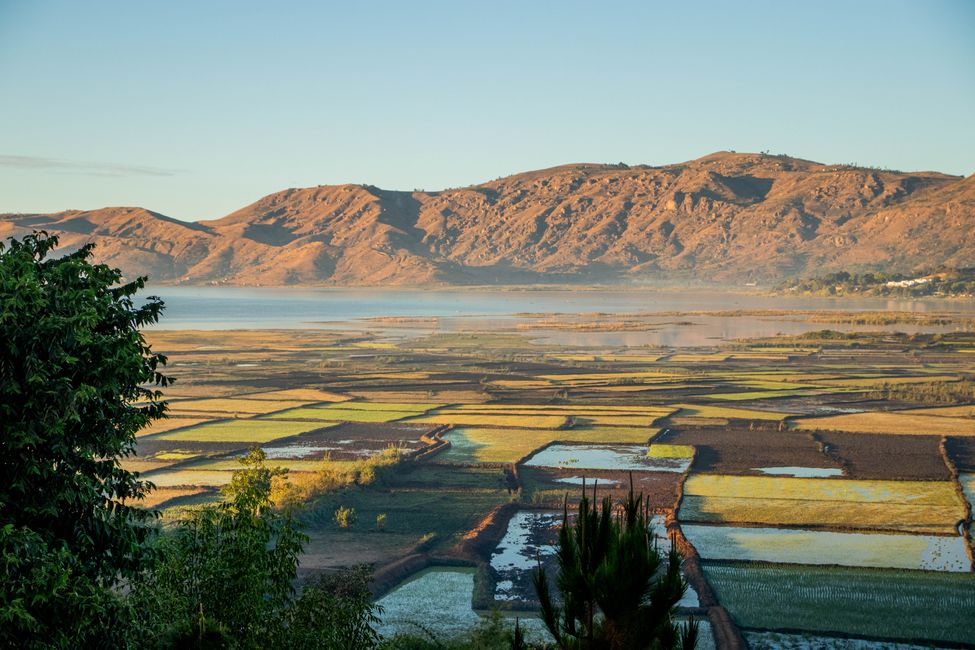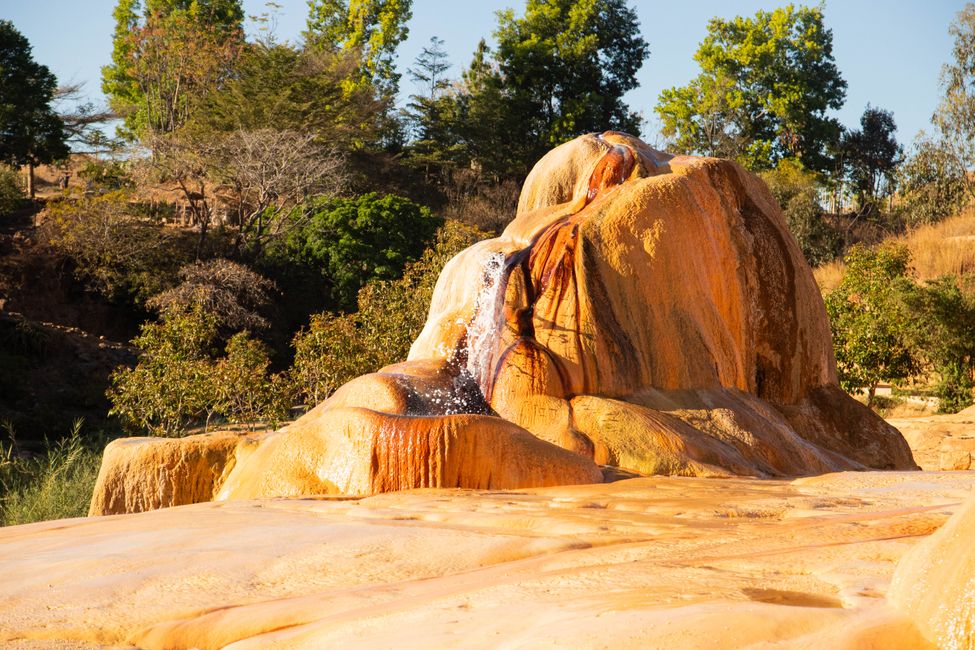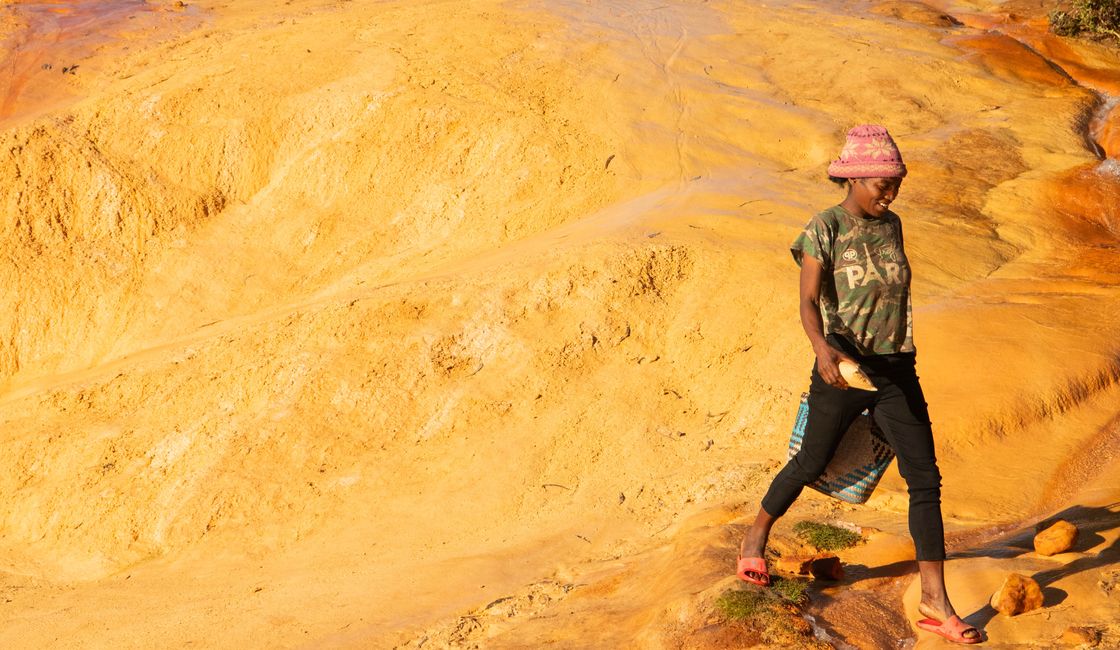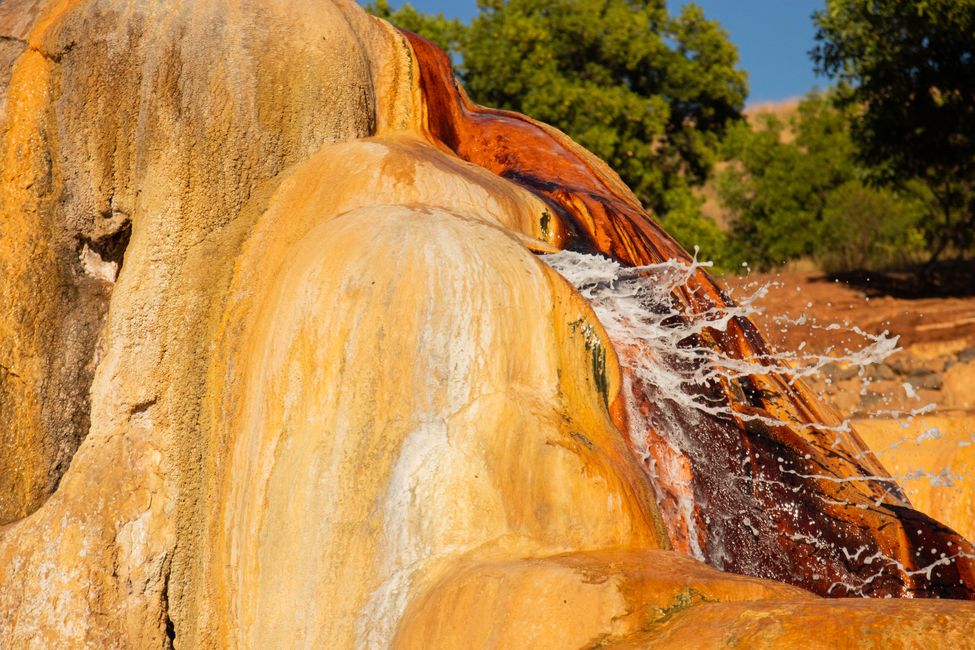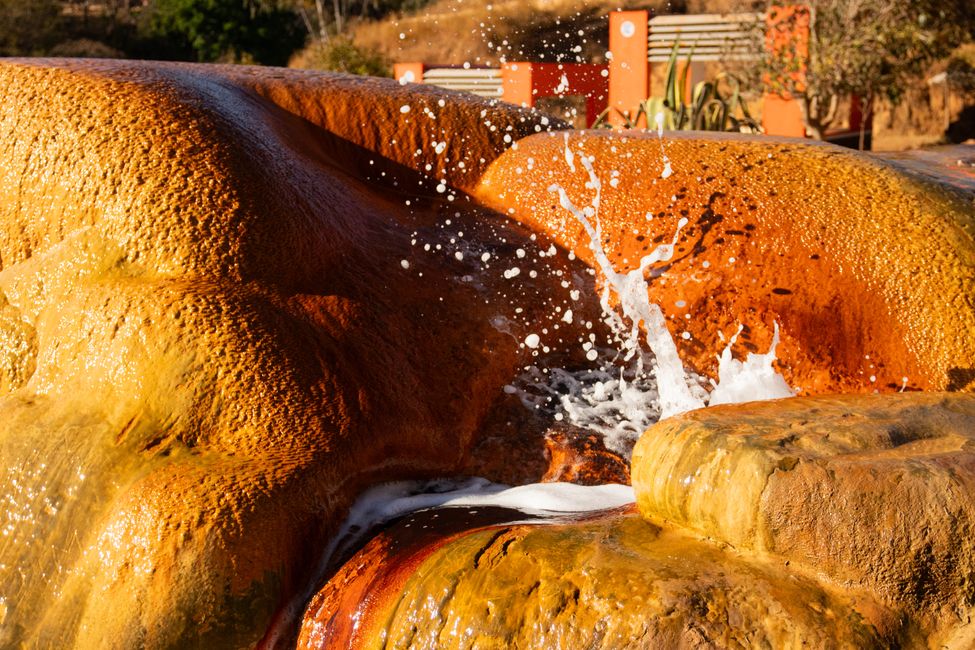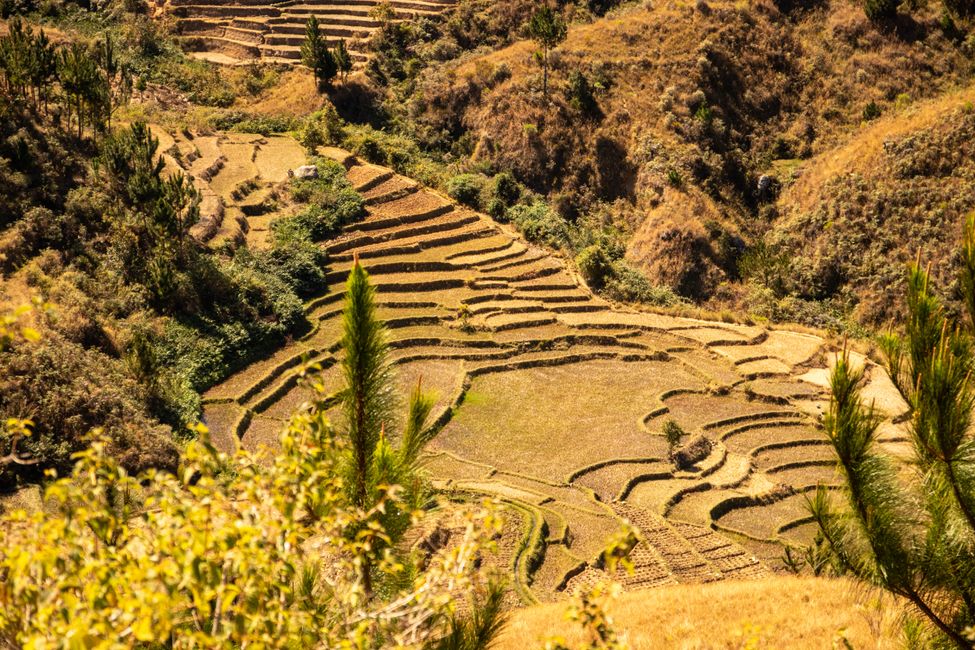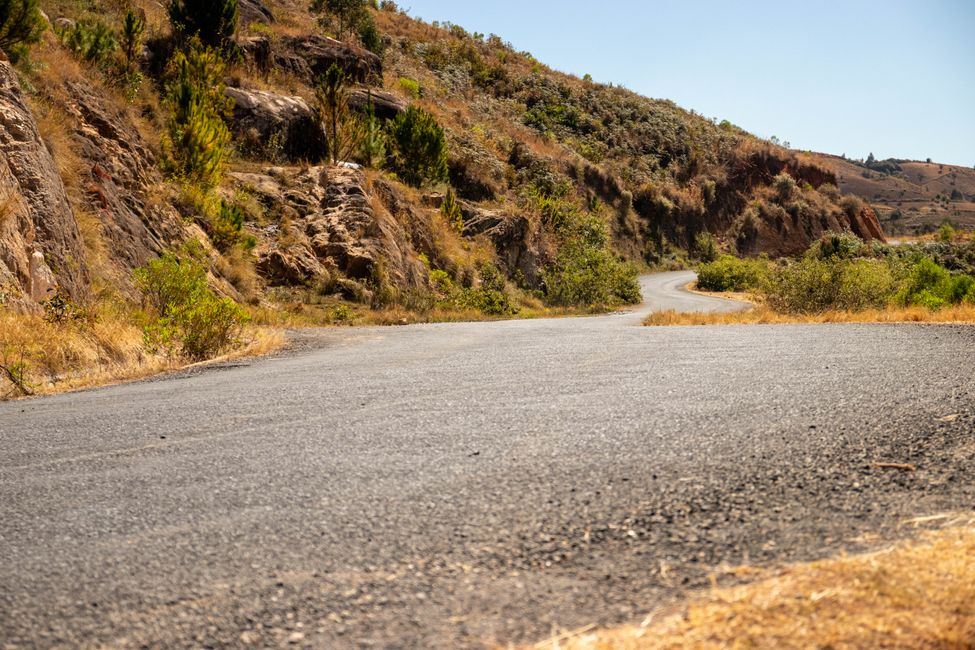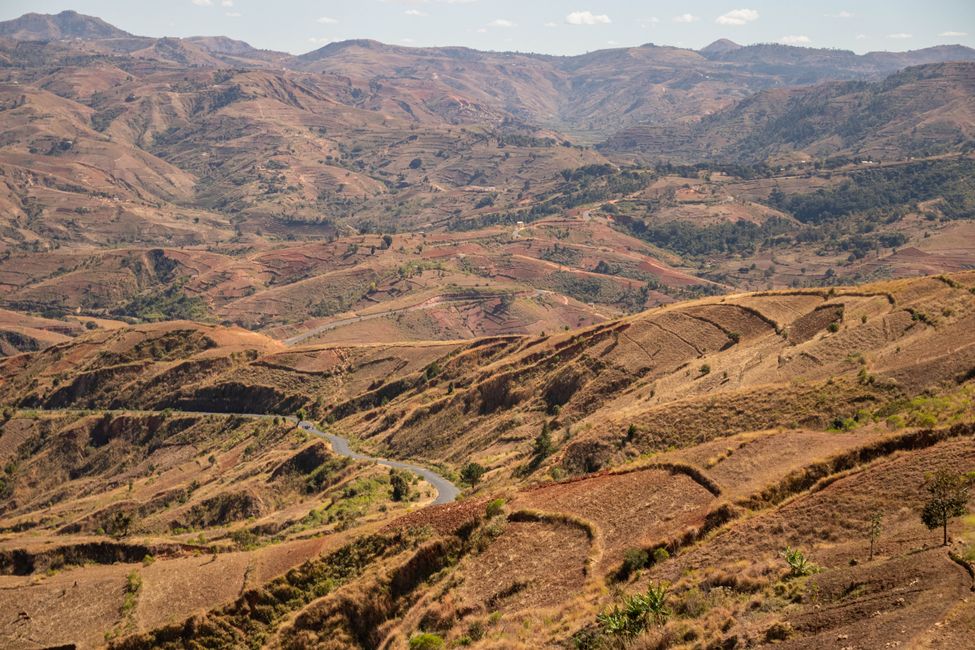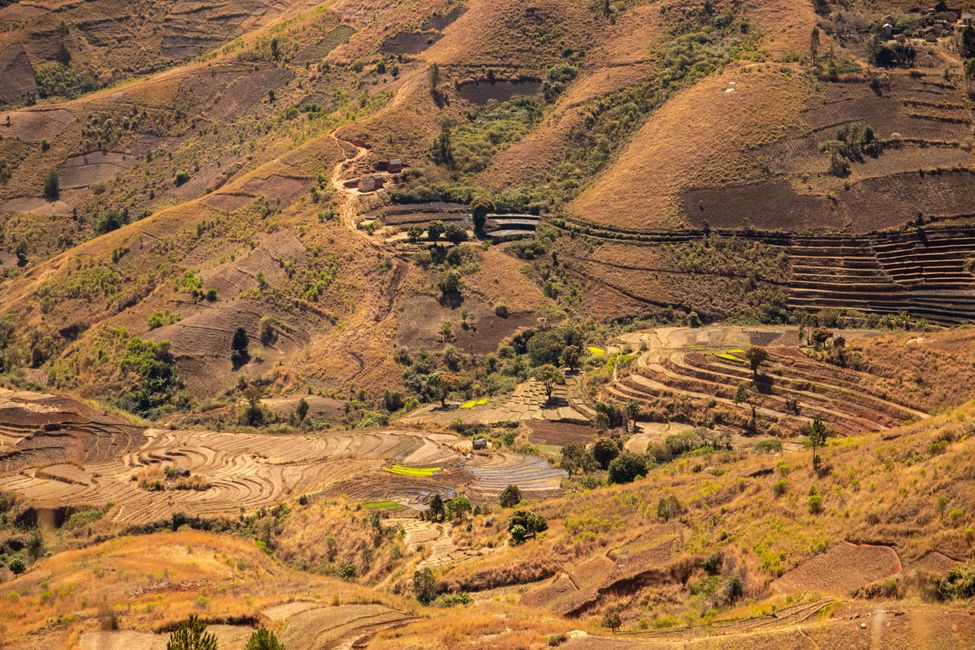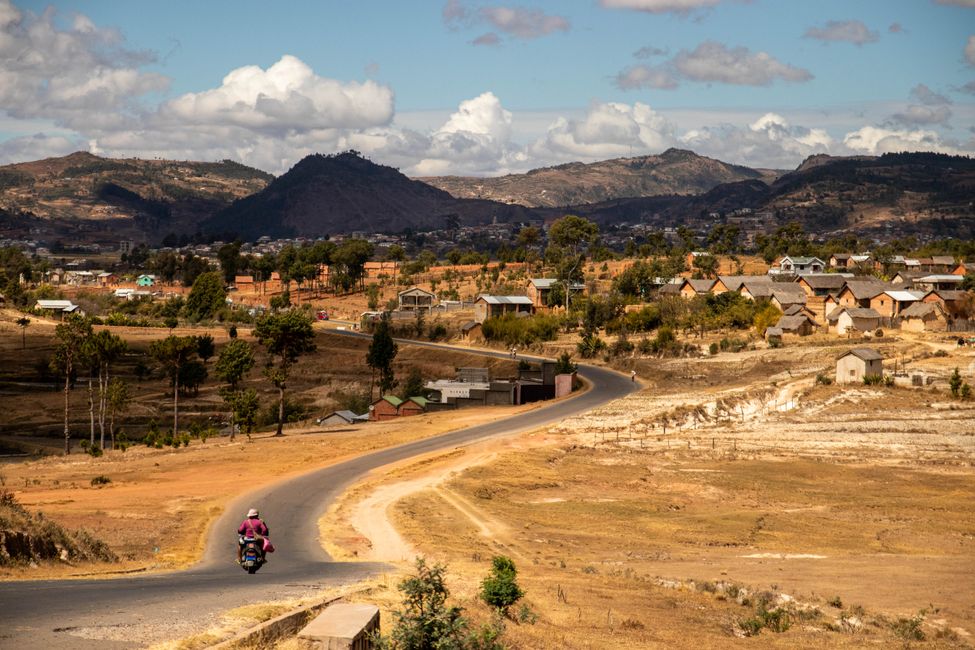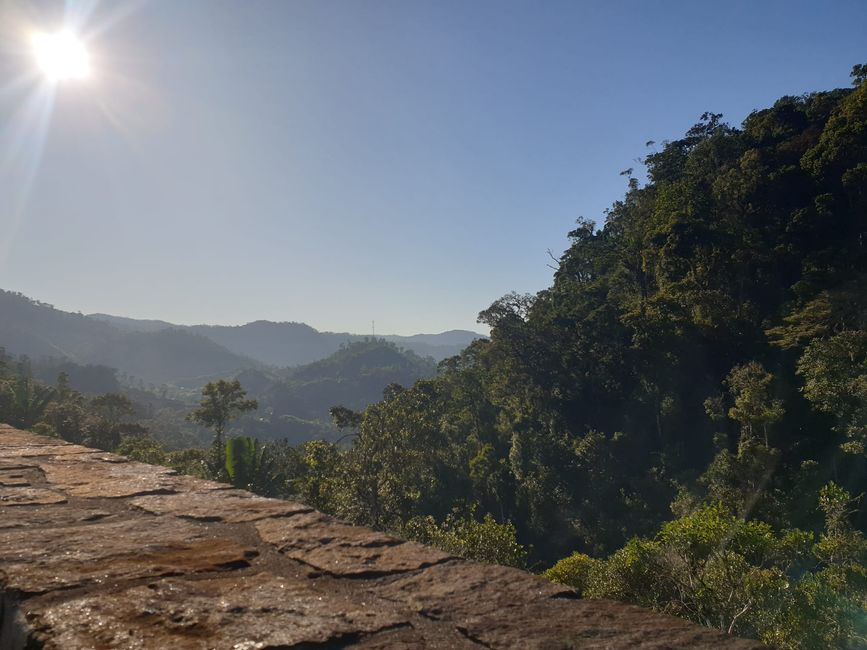
Madagaskar
vakantio.de/insel-in-der-ferne
Highland and Antsirabe
Wɔatintim: 15.08.2023
Kyerɛw wo din wɔ Newsletter no mu
Plan for the day: Wake up in Ampefy and drive to the geyser without breakfast. Then have breakfast at a fancy breakfast restaurant. After that, drive to Antsirabe through the highlands and rice fields. Then have lunch, take a rickshaw tour of the city. Visit handicraft workshops: bicycles, embroidery, and materials made from zebu horn. Then visit the big market and drive to Carsten's house.
Facts of the day: the highest mountain is called: Where the clouds never disappear and is 2700m high. Today we drove over a pass with 1500m. Zara niandru: good weather. Everything from the zebu is used (even skin and noses are eaten). Potatoes are an important food in Antsirabe.
This morning I woke up incredibly early again and quickly got ready so as not to miss the first rays of sunshine. Then I grabbed my camera and took a photo of the view again. Our departure at 7 o'clock went according to plan, we wanted to arrive at the geyser as early as possible before there were too many people there. That worked out well, we were the only ones there and with the early morning sun, it was a beautiful atmosphere by the water. A few women wanted to sell the especially sulfur-rich soil, but they also showed me some beautiful places at the geyser and accepted that I didn't want to buy anything. After enjoying the peace and the sound of the water enough, we drove to breakfast. There we had a coffee and a croissant and some fruits. And water! You have to get used to always having to buy new water, and if you haven't bought any, then there's no water for now. But I think I'm slowly getting the hang of it. After breakfast (Carsten says that's the most important meal of the day), we set off for Antsirabe (about 4 hours away). We passed cute villages, drove up and down many roads, and navigated many curves. We drove through the beautiful highlands and our necks got longer and longer, while the abysses got deeper and the view became wider. At some point, I thought, okay, now I want to go and look and that's exactly where Manantsoa stopped. I am amazed at the many different mountains, rice terraces, and everything looks completely different from every angle. I can't get enough of this view. Manantsoa talks about the highest mountains in the country and how it takes about 5-6 days to climb them. His brother climbed one last week because he works as a cook for the hiking groups. It's apparently not super easy to climb these mountains, but still possible. We continue driving and stop a few more times to enjoy the view. At some point, the previously quite good road becomes a bit worse again and we turn right, now we are back on National Highway 7: right to Antsirabe and left back to Tana. On the main road, it's busy again, but at the same time less unique and the landscape is not as exciting anymore. We drive for about an hour until we reach Antsirabe. Compared to Tana, it's a small town. But still: crowded, colorful, and plenty. We drive to a small Malagasy restaurant and order three "Bol renversé". The upside-down bowl is a typical dish with rice, vegetables, and often a fried egg. It was very tasty and by now I'm so used to rice that I'm just happy when I can eat rice. So far there hasn't been much rice for breakfast, let's see how the next few days go. After eating, we go out onto the street and Manantsoa waves over two rickshaw drivers. "You're going on a city tour now," he says, and we're already sitting on the two bikes and zooming through the city, making stops at a few buildings and being part of the colorful life. I hold my phone tightly in my hand because occasionally a little girl hangs onto the back of the rickshaw and asks for money. At first, I feel strange being chauffeured around the city like this, but it quickly becomes clear that this is a pretty common mode of transportation and many people ride in rickshaws from A to B. We look at various things in the city and finally stop at a market. There are people bustling everywhere and our drivers ask if we want to get off. Well, not necessarily. But they point behind us and there's Manantsoa already there, picking us up, luckily. We get in the car and drive to a house where various artisans work. People who make small bicycles from various materials, women who embroider incredible patterns, lemurs or baobabs on cloths and bags, and a workshop where all sorts of things are made from zebu horn: cutlery, jewelry, hair clips, and much more. It's very impressive how quickly it's possible to create a small spoon from a horn, we get to take the sample with us. After the visit to the craftsmanship, Manantsoa wants to show us the "big market". Okay, we say. It is truly big here. They have everything in this market. We stick close to Manantsoa so as not to get lost, I would never find the way out again. "This is the clothing area," "here's the shoes area," "here's the kitchen stuff area"...and so on. Medicine, natural medicine made from medicinal plants and other things, of course, there is that too. When we get to the live animals section, I am amazed at what can be found in a market. "Here, there are all kinds of animals." Well, at least no wild animals. Everything else. Poultry of all kinds, guinea pigs, rabbits, cats, donkeys, and so on. We are overwhelmed. Manantsoa grins: This is allegedly the second-largest market in Africa! Well, I don't know if that's true, he doesn't know either, but we have decided that it is definitely a very big market. In the meat section, well, I started to feel a little weird. Unrefrigerated meat and every part of an animal is sold and used here. From all the innards, to noses, legs, skin, and subcutaneous tissue. "We make a salad out of the skin." Well... I think I'll pass on the "salad". I feel a bit nauseous and wonder how long all these things have been lying around here. One day? Two? On a hot day, definitely long enough for it to become moderately edible. After that, we go to the vegetable "department". Much better! It's great to see how many different types of vegetables there are, and the fruit looks good too! "This is my area," I say. There are zillions of different kinds of beans and just as many varieties of rice. Beans and Rice, Rice and Beans is the motto. Eventually, we find an end to the spectacle and go back to the car, overwhelmed. We drive out of the city and to Carsten's house and his in-laws' house. Carsten is in Germany with his wife, but his sister and his wife's brother welcome us and we will be staying here for the next two nights. In the evening, we have peas and carrots, mashed potatoes, and rice. Very delicious. We are super tired and go to bed early.
Kyerɛw wo din wɔ Newsletter no mu
Anoyie

